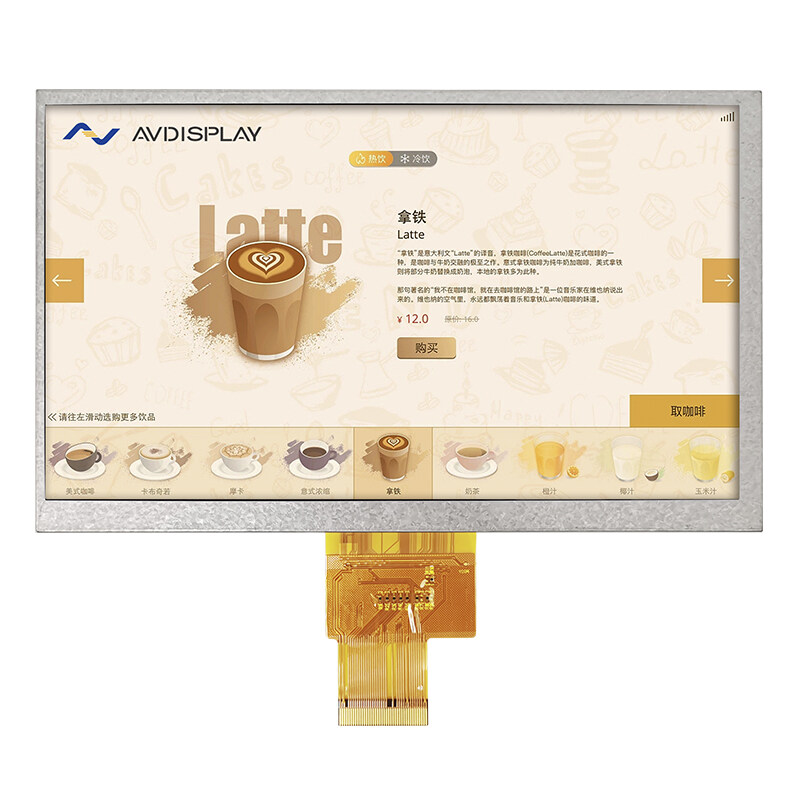Email format error
Email cannot be empty
Email already exists
6-20 characters(letters plus numbers only)
The password is inconsistent
Email format error
Email cannot be empty
Email does not exist
6-20 characters(letters plus numbers only)
The password is inconsistent


Imagine scrolling through your favorite photos, editing a document, or playing a game with just a simple tap or swipe on your screen. The allure of touch screen monitors lies in their interactive and intuitive nature, making tasks more engaging and, often, more efficient. But are they truly beneficial for everyday use, or are they just a high-tech gimmick? Let’s explore the advantages and potential drawbacks of touch screen monitors to help you decide if they’re the right choice for you.
One of the primary benefits of touch screen monitors is the enhanced user experience they offer. Unlike traditional monitors that require a mouse and keyboard, touch screens allow users to interact directly with what they see on the screen. This direct interaction can make navigation more intuitive, especially for tasks like scrolling through menus, zooming in on images, or selecting options.
Touch screen monitors are incredibly intuitive, making them accessible to users of all ages and skill levels. The ability to interact with applications directly can reduce the learning curve, allowing for quicker adaptation and more efficient use.
With a touch screen, users can navigate through applications and websites much faster. Instead of moving a cursor to a specific location, users can simply tap where they want to go. This can significantly speed up tasks like web browsing, document editing, and multimedia consumption.
Another significant advantage of touch screen monitors is their space efficiency. By integrating touch functionality directly into the screen, there is less need for additional peripherals like a mouse or a large keyboard. This can be particularly beneficial in environments where desk space is limited, such as in retail settings, healthcare facilities, and small office spaces.
The sleek, integrated design of touch screen monitors reduces clutter, creating a cleaner and more organized workspace. This can enhance productivity by providing a more pleasant and efficient working environment.
Touch screen monitors are highly versatile and can be used in a variety of settings. In retail, they can serve as point-of-sale systems. In healthcare, they can provide easy access to patient records. In education, they can be used for interactive learning activities. The possibilities are nearly endless.
One of the main drawbacks of touch screen monitors is their higher cost compared to traditional monitors. The technology required to enable touch functionality can add to the overall expense, making touch screen monitors a pricier investment.
The initial investment in touch screen technology can be substantial, especially for high-quality models. Businesses and individuals need to weigh the benefits against the cost to determine if the investment is justified for their specific needs.
Touch screen monitors can also require more maintenance than traditional monitors. The screens can accumulate fingerprints and smudges, necessitating regular cleaning to maintain optimal performance and visibility.
Using a touch screen monitor can sometimes lead to ergonomic issues. Prolonged use of a touch screen can cause strain on the arms and shoulders, particularly if the screen is positioned at an awkward angle.
Proper placement of the touch screen monitor is crucial to minimize strain. It should be positioned at a comfortable height and angle to allow for natural arm movements without causing discomfort.
While touch screens are excellent for many applications, they may not be the best choice for tasks that require precise input, such as detailed graphic design or extensive typing. In these cases, traditional input devices like a mouse and keyboard may still be preferred.
In the business and retail sectors, touch screen monitors are invaluable tools. They streamline operations, enhance customer interactions, and provide a modern, efficient interface for transactions and information access.
Touch screen monitors are commonly used in point of sale (POS) systems, allowing cashiers to quickly and easily process transactions. The intuitive interface reduces training time and improves customer service.
Businesses use touch screen monitors in information kiosks to provide customers with easy access to product information, directions, and other services. These kiosks enhance the customer experience and can operate 24/7 without requiring staff.
Touch screen monitors are increasingly being used in educational settings, providing interactive learning experiences for students. They support a range of educational software and applications that make learning more engaging and effective.
Many classrooms now feature interactive whiteboards that utilize touch screen technology. Teachers can write on the board, display multimedia content, and interact with educational software, making lessons more dynamic and engaging.
In corporate training environments, touch screen monitors are used for simulations and interactive training programs. They provide a hands-on approach to learning new skills and procedures.
In the healthcare industry, touch screen monitors are used in various applications, from patient check-in systems to accessing medical records. They enhance the efficiency and accuracy of healthcare delivery.
Touch screen monitors enable healthcare providers to quickly access and update electronic medical records (EMR), improving the accuracy and efficiency of patient care. This can lead to better patient outcomes and streamlined operations.
Touch screens are also used in patient interaction systems, allowing patients to check in, complete forms, and access information about their treatment. This reduces wait times and improves the overall patient experience.
Future touch screen monitors are expected to have even greater touch sensitivity, allowing for more precise and responsive interactions. This will enhance the user experience and expand the range of applications for touch screen technology.
Advancements in pressure sensitivity will enable touch screens to detect different levels of pressure, allowing for more nuanced interactions. This can be particularly beneficial for applications like digital art and design.
As touch screen technology continues to evolve, multi-touch gestures will become more advanced, allowing for more complex and intuitive interactions. This will further enhance the versatility and usability of touch screen monitors.
The integration of touch screen monitors with artificial intelligence (AI) and the Internet of Things (IoT) will open up new possibilities for smart, interconnected devices. This will lead to more personalized and efficient user experiences.
In smart homes and offices, touch screen monitors will play a central role in controlling various connected devices and systems. This will streamline operations and improve convenience.
In industrial settings, touch screen monitors integrated with AI can provide predictive maintenance capabilities, alerting operators to potential issues before they become critical. This can reduce downtime and improve productivity.
Touch screen monitors offer numerous benefits, from enhanced user experience and space efficiency to versatility in various applications. While they come with some drawbacks, such as higher cost and potential ergonomic issues, the advantages often outweigh these concerns. As technology continues to advance, touch screen monitors will become even more integral to our daily lives, providing intuitive and interactive interfaces for a wide range of tasks. When considering an investment in touch screen technology, it's essential to work with reliable touch display monitor suppliers to ensure you get the best quality and performance for your needs.